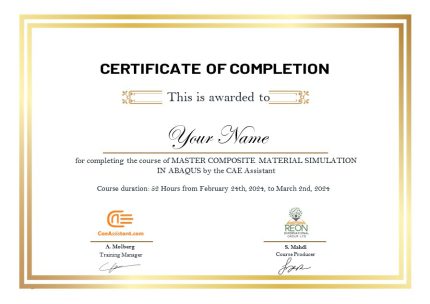By enrolling in this course you’ll learn:
Unearth the Fundamentals of Finite Element Analysis Course
Begin your journey in finite element analysis course by establishing a solid understanding of the underlying principles of finite element analysis. Grasp the concepts that underpin this powerful computational technique, laying the groundwork for effective problem-solving.
Master the Art of Implicit and Explicit Analysis
Explore the intricacies of both implicit and explicit analysis methods, two cornerstones of Finite Element Analysis (FEA). Delve into the strengths and applications of each approach, equipping yourself with the versatility to handle diverse engineering scenarios.
Unravel the Abaqus Software Ecosystem
Navigate the user-friendly Abaqus software environment, gaining proficiency in each module’s functionalities. Uncover the tools and techniques necessary to effectively model, simulate, and analyze engineering problems.
Dive into Practical Simulations: A Realm of Possibilities
Embark on a hands-on exploration of practical Finite Element Analysis (FEA) simulations, encompassing a broad range of engineering disciplines.
- Static Analysis: Uncover the behavior of structures under static loading conditions, mastering the principles of stress, strain, and deformation.
- Dynamic Analysis: Delve into the dynamic response of structures to time-varying loads, gaining insights into vibration, natural frequencies, and transient phenomena.
- Heat Transfer Analysis: Unravel the complexities of heat transfer mechanisms, including conduction, convection, and radiation, in engineering systems.
- Composite Material Analysis: Explore the intricacies of composite materials, simulating their behavior under various loading conditions and failure criteria.
- Buckle and Frequency Analysis: Investigate the stability of structures under compressive loads, determining critical buckling loads and natural frequencies.
- Coupled Temperature-Displacement Analysis: Uncover the interplay between thermal and mechanical phenomena, simulating coupled temperature-displacement problems.
Post-Processing and Result Analysis: Unveiling the Story Behind the Numbers
Master the art of post-processing and result analysis, transforming raw simulation data into meaningful insights. Learn to visualize, interpret, and extract valuable information from simulation results, empowering you to make informed engineering decisions.
his course appears to be a comprehensive guide to Abaqus subroutine tutorial, which are a powerful tool for extending the capabilities of Abaqus software. The course covers a wide range of subroutines, including:
Material Subroutines:
- UMAT and VUMAT: These subroutines are used to define complex material models that are not available in Abaqus by default.
- USDFLD and VUSDFLD: These subroutines allow users to define material properties that change based on various conditions.
Load Subroutines:
-
- VDLOAD and DLOAD: These subroutines are used to define complex loads.
By enrolling in this Python FEM course you’ll learn:
Master Python Scripting Fundamentals: Abaqus Python Course
Gain a solid foundation in Python, including variables, data types, control flow, functions, and object-oriented programming.
Automate Complex Abaqus Workflows:
Effortlessly create and manipulate intricate Abaqus models using Python scripts.
Boost Efficiency and Innovation:
Automate repetitive tasks, design optimization studies, and parametric analyses to accelerate your workflow and explore design possibilities.
Extend Abaqus Functionality:
Build custom graphical user interfaces (GUIs) and kernel plugins to further extend Abaqus capabilities and personalize your experience.
Perform In-Depth Analysis:
Extract and analyze critical simulation data with precision using Python libraries and scripting techniques.
Python for Mechanical Engineers
Need More information? Watch This
Are you expert in finite element analysis? Check out our tutorials


Reviews
Clear filtersThere are no reviews yet.